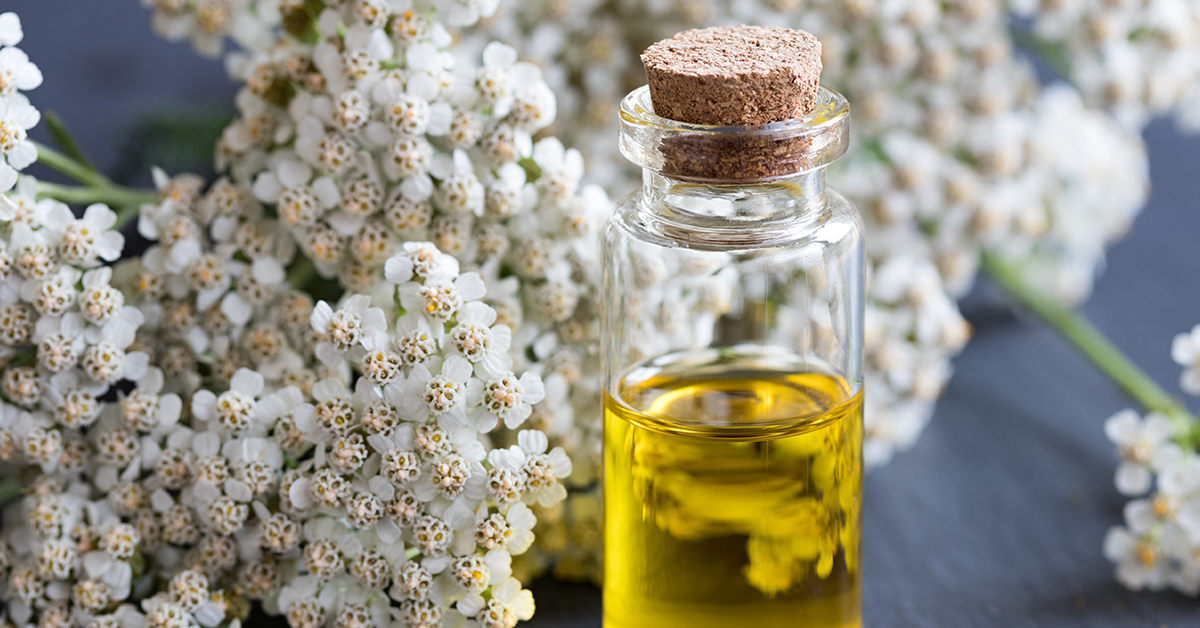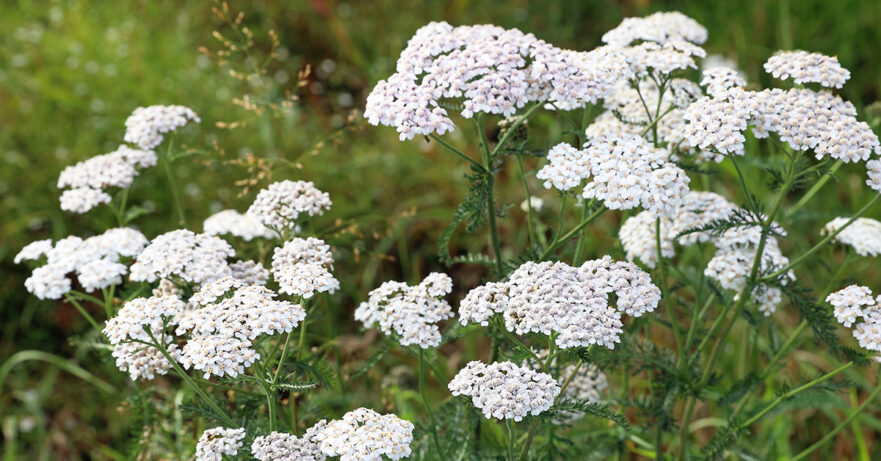In this monograph about yarrow:
📖 Introduction | 🌱 Botanical Description | 📜 Traditional Uses | 🔍 Phytochemistry | ✨ Applications and Uses | 🛡️ Safety Profile
📖 Introduction
Yarrow (Achillea millefolium) is a perennial herb noted for its extensive use in traditional medicine, particularly for its wound healing, anti-inflammatory, and digestive benefits. This versatile herb is also appreciated for its ornamental qualities in gardens.
| English Name | Yarrow |
| Latin Name | Achillea millefolium |
| Parts Used | Aerial parts |
| Traditional Uses | Wound healing, fever reduction, digestive issues |
| Herbal Actions | Astringent, antispasmodic, anti-inflammatory, diaphoretic |
🌱 Botanical Description
Scientific Classification
Achillea millefolium is part of the Asteraceae family.
Physical Characteristics
Yarrow possesses a distinctive appearance with its feathery, fern-like leaves and clusters of small, white to pink flowers that form a flat-topped capitulum.
Natural Habitat and Cultivation Details
Native to temperate regions of the Northern Hemisphere in Europe, Asia, and North America, yarrow thrives in various habitats, including meadows, fields, and roadsides. It prefers well-drained soil and full sun but is adaptable to multiple environmental conditions.
📜 Traditional Uses
Yarrow has been historically used for its ability to stop bleeding and heal wounds, earning it the nickname “soldier’s woundwort”. It has also been used to reduce fever and as a digestive aid, improving gastrointestinal health and stimulating appetite.

🔍 Phytochemistry (Active Constituents)
Yarrow contains several active constituents that confer its therapeutic effects:
- Flavonoids: These compounds provide antioxidant benefits and support the body’s natural response to inflammation.
- Volatile oils: Containing cineole and camphor, these have antiseptic and anti-inflammatory actions and are useful in treating respiratory issues.
- Tannins: These offer astringent properties that help tone tissues and stop bleeding.
✨ Applications and Uses
Yarrow is employed in various therapeutic applications due to its beneficial properties in healing wounds, supporting digestive health, and improving respiratory function.
- Wound healing: Due to its astringent and antimicrobial properties, yarrow is commonly applied topically as a poultice or infused into lotions for cuts, abrasions, and skin irritations.
- Digestive health: Yarrow is used in teas to alleviate digestive discomfort, such as cramps and bloating, thanks to its bitter components that stimulate bile flow.
- Respiratory health: Yarrow tea also relieves cold and flu symptoms, as it promotes sweating and reduces fever.
🛡️ Safety Profile
Yarrow is generally safe when used in typical culinary and medicinal amounts.
It is contraindicated during pregnancy due to its potential to stimulate uterine contractions. Individuals with allergies to other Asteraceae plants, such as daisies and ragweed, may also experience allergic reactions to yarrow.
As always, it is recommended to consult a healthcare provider before beginning any new herbal therapy, especially for those with existing health conditions or who are taking other medications.
📃 Related Posts
🌱 Related Herbs

